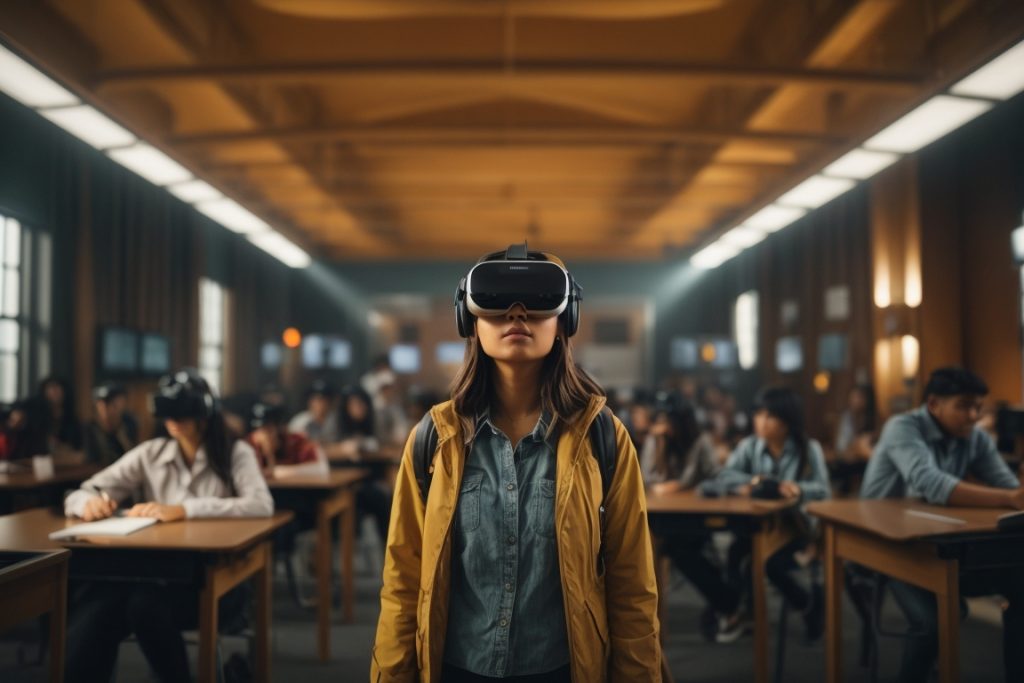
Virtual Reality (VR) and Augmented Reality (AR) in the Classroom
The educational landscape is undergoing a profound transformation, driven by the rapid advancement of technology. Virtual reality (VR) and augmented reality (AR) are emerging as game-changers, offering immersive and interactive learning experiences that are revolutionizing the way we teach and learn.
Virtual Reality: Transporting Learners to New Worlds
VR immerses learners in simulated environments, allowing them to explore distant lands, conduct scientific experiments, or experience historical events firsthand. As they interact with these virtual worlds, students gain a deeper understanding of concepts, develop critical thinking skills, and enhance their problem-solving abilities.
For instance, students in geography can visit the Great Barrier Reef without leaving the classroom, while medical students can practice surgical procedures in a realistic virtual operating room. VR also has the potential to foster empathy and understanding, allowing students to experience various perspectives and cultures.
Augmented Reality: Enhancing the Real World with Digital Information
AR overlays digital information onto the real world, creating a seamless blend of the physical and digital realms. This technology has the power to enhance classroom learning in numerous ways.
In science classes, AR can bring molecular structures to life, allowing students to manipulate and observe them in 3D. In history classes, AR can overlay historical figures or events onto real-world locations, bringing the past to life. And in language classes, AR can provide real-time translation of foreign languages, enhancing communication and comprehension.
The Impact of VR and AR on Learning
The integration of VR and AR in the classroom offers a multitude of benefits for both teachers and students.
Enhanced Engagement and Motivation
VR and AR create immersive and interactive learning experiences that capture students’ attention, making learning more engaging and motivating. Students are more likely to be actively involved in the learning process when they are immersed in a virtual or augmented environment.
Improved Understanding and Retention
VR and AR make abstract concepts more tangible and relatable, leading to improved understanding and retention of knowledge. By providing hands-on experiences, VR and AR allow students to interact with concepts in a way that traditional methods often cannot.
Development of 21st-century Skills
The use of VR and AR encourages the development of 21st-century skills such as critical thinking, problem-solving, creativity, and collaboration. Students must navigate virtual worlds, analyze complex information, and collaborate with others in order to achieve their goals.
Accessibility and Inclusion
VR and AR can overcome geographical barriers and provide access to quality education for students with disabilities. Students can explore virtual environments from the comfort of their homes or hospitals, and AR can provide personalized learning experiences that cater to individual needs.
Challenges and Considerations
While VR and AR offer immense potential for education, there are also challenges and considerations that need to be addressed:
- Cost: VR and AR hardware and software can be expensive, making it challenging for some schools to adopt these technologies.
- Training: Teachers need training to effectively integrate VR and AR into their lessons.
- Content: There is a need for high-quality educational VR and AR content that is aligned with curriculum standards.
A Bright Future for VR and AR in Education
VR and AR are poised to revolutionize education, making learning more engaging, effective, and accessible for all learners. As these technologies continue to mature and become more affordable, we can expect to see even more innovative applications that will further shape the future of education. The possibilities are endless, and the future of learning is bright with the promise of VR and AR.